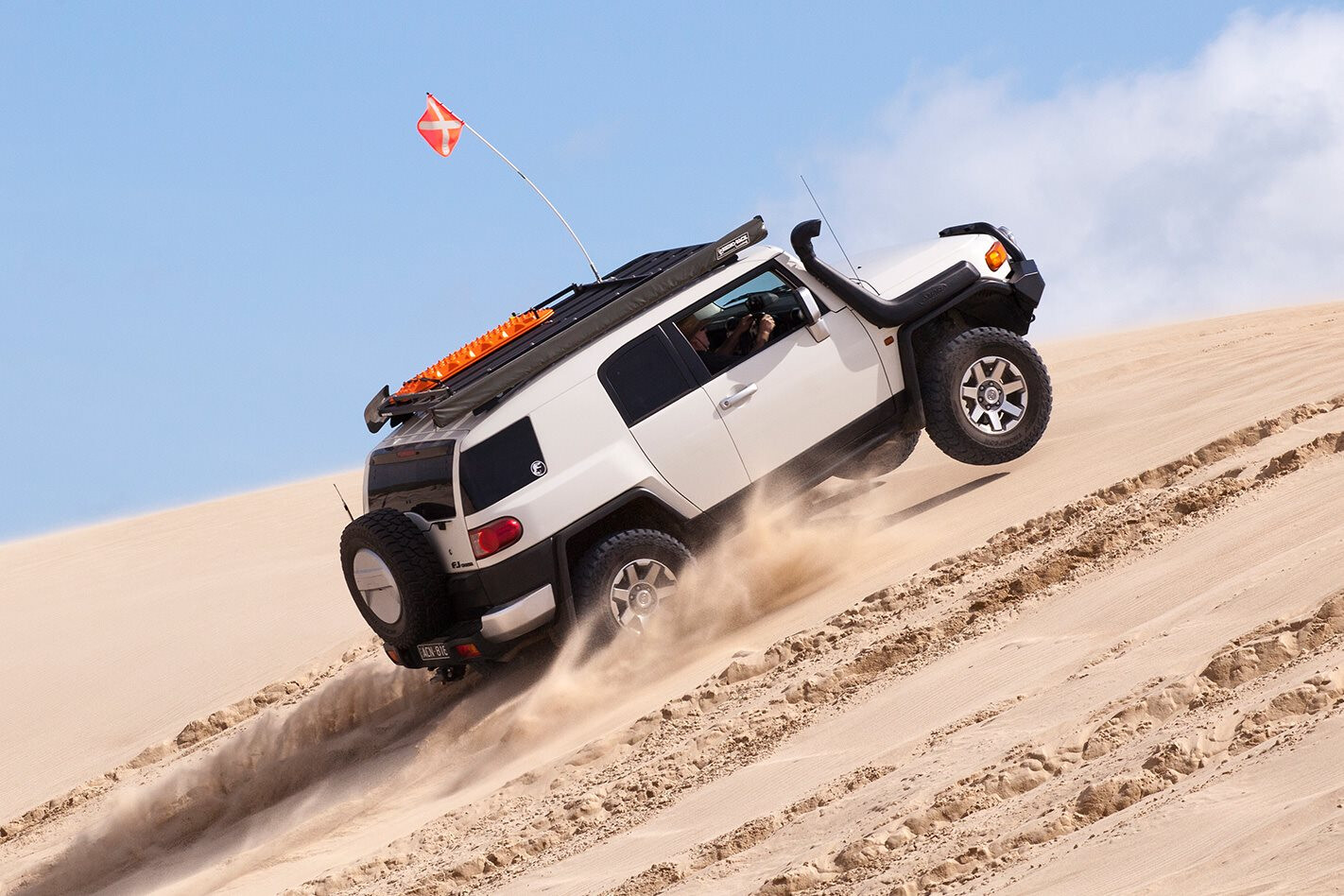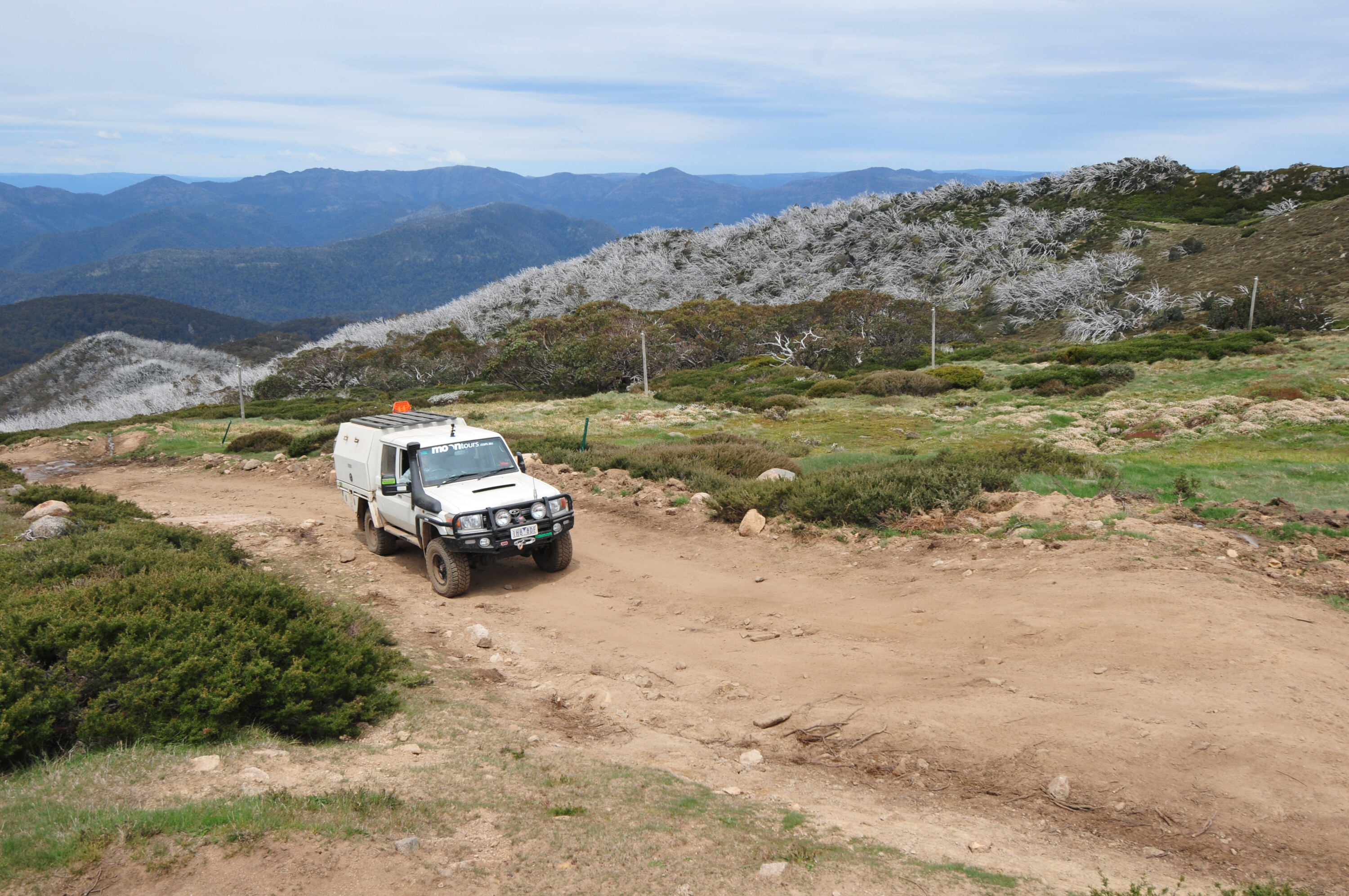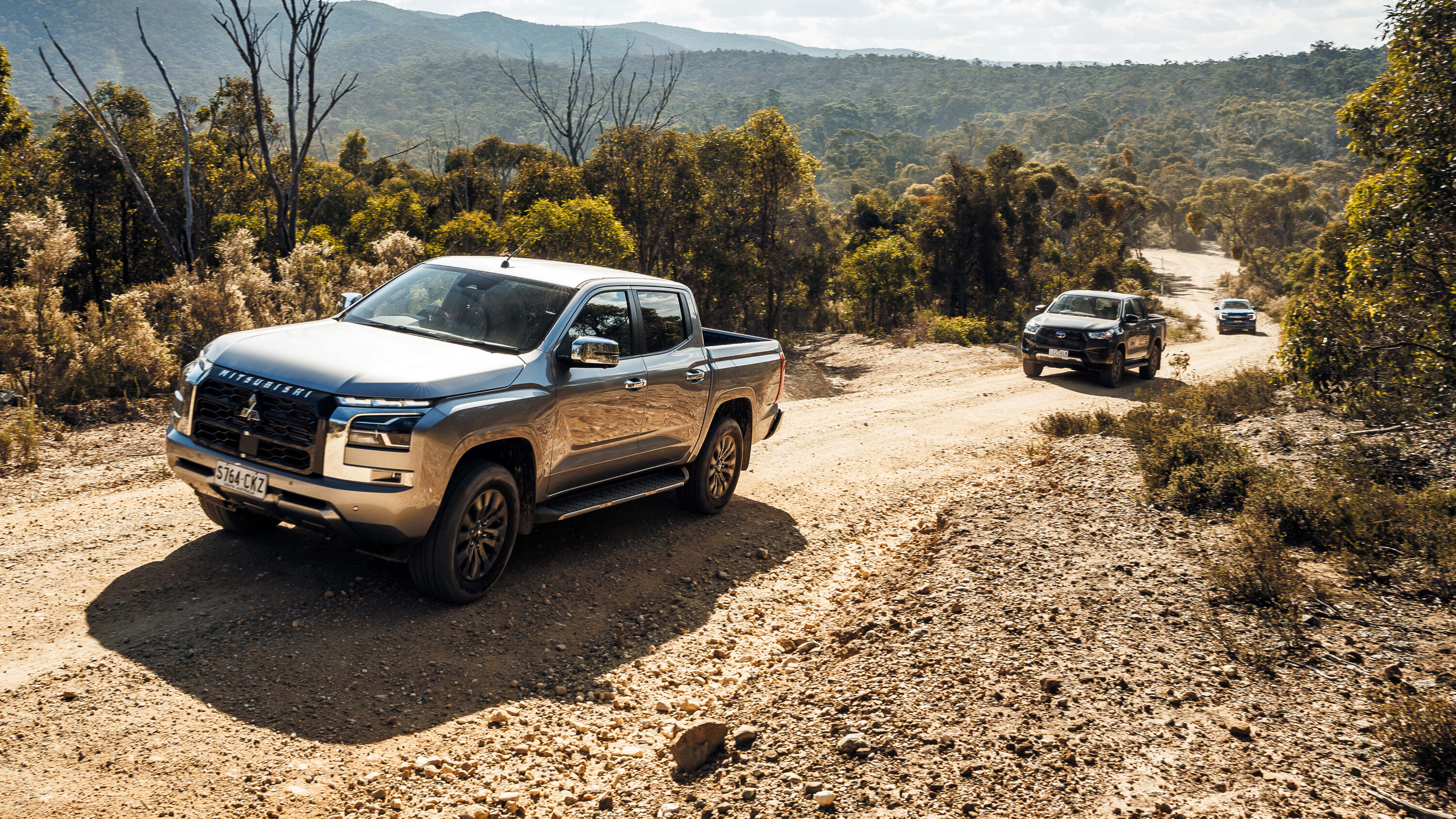Coastal travellers heading south to Victoria and hoping to find some great beach drives will be bitterly disappointed.
From the border with New South Wales in the north-east, right around to the South Australian border in the west, there are no public beaches where you can just turn up and drive your 4×4 along the sand, in the dunes, or down to the water’s edge. Not legally, anyway, and excepting private land.
There is one small area of coastal dunes accessible to vehicles and it’s in the far west near the seaside town of Portland. Because it has been using the dunes here for more than 40 years, the Portland Dune Buggy Club has retained access to a limited area within the Discovery Bay Coastal Park, and for a fee you can join the club to enjoy the driving here.
For anyone who hasn’t driven the Portland dunes, it really is a worthwhile experience. The dunes give environmentally conscious and restrained drivers the chance to unleash the beast within, but they can also teach drivers a lot about driving a 4×4 in tricky conditions. Sand, snow and mud share many similarities when it comes to how a vehicle grips. Stop and it’s very hard to get going; start a descent and it’s hard not to go down it – you just have to hope you’ve made the right decision, or have a religious epiphany (perhaps both).
A large grassy camping area at the back of the dune complex has flushing toilets and a hot shower, but being set in low coastal scrub there is little shade or protection from the prevailing winds coming from the Southern Ocean. Spring is arguably the best time of the year to visit Portland, before the hotter months of summer.
There is only one way in and out of the dune complex and that’s a wide track up a moderately steep dune.
It’s generally at this point that people find out whether their choices of tyre pressures were correct or not. The general rule seems to be to start at 16psi and work on down from there as necessary – but remember to be gentle with directional control because it’s easy to roll a tyre off a rim at low pressures. Reseating a tyre is relatively easy with a good compressor, but emptying the tyre of sand can be a bigger job.
Once on the dunes, you are very much left to your own devices and if you’re among the first vehicles out for the day, there probably won’t be any tracks to guide you.
The bulk of the dune complex is to the east towards Portland, but perhaps the best place to start exploring is the smaller area to the west, accessible via a short and very steep climb up the face of a soft dune – probably after a further reduction of tyre pressures.
Diff locks are of little help in soft sand; in fact, they’re possibly a disadvantage, because when you do get bogged (and you will), too much right foot will have all four wheels digging holes.
Farther west is a football field-sized depression called ‘The Bowl’. While it’s not a manoeuvre recommended for 4x4s, specifically made dune buggies circle the inside of The Bowl halfway up its wall with relative ease. Apparently, they need to maintain 130km/h to defy gravity on the 30-degree slope of soft windblown sand.
There are a couple of short tracks that have been cut through the dunes to provide controlled access to the beach – a top place for fishing, by the way. While it’s illegal to drive on the beach, anyone who thinks they won’t be caught might have more to worry about than a fine, as the sand is exceptionally soft and there is very little beach left at high tide.
The eastern end of the dune complex includes a continuous wide strip of sand as far as the eye can see. Powering your 4×4 up hundreds of metres of unbroken sand dune is thrilling but perhaps not as thrilling as getting to the crest and finding the only thing on the other side is a view.
The lee side of the dunes are often much softer and steeper than the windward side and, while gravity will get your vehicle to the bottom one way or another, it is quite possible you won’t be able to drive back up. The lesson here then is to not drive into a low area that you can’t drive out of.
Speaking of getting down dunes – descend as slowly as possible to avoid the risk of burying the nose of the vehicle into terra firma at the bottom. However, you need to drive down so that your wheels are turning faster than the sand is sliding past them. To do otherwise can see your vehicle getting sideways in a soft patch of sand, and a top-heavy 4×4 sliding sideways down a dune isn’t something likely to have a happy ending.
Getting up dunes requires appropriate momentum – the difficulty is that appropriate momentum for one incline may be insufficient or excessive for another.
Excessive momentum has the potential to culminate in two ways: it will suddenly stop when your vehicle’s nose gets buried in the face of the dune, or your vehicle will do a couple of things that 4x4s were never designed to do – fly and land!
No matter how careful you are, glare from the bright white sand makes it difficult to see small undulations in the surface and at some time during your exploration of the dunes, pilot error will undoubtedly lead to a manoeuvre that could get you in to trouble.
The Portland Dune Buggy Club area is a great place to have a bit of fun while exploring the capabilities of vehicle and driver. If you get tired of driving on the sand, there are tracks to explore in the nearby forest reserves, or you can go fishing off the beach.
Whatever catches your fancy – this is a top location to take the family to for a few days’ getaway.
Portland Dune Buggy Club
The Portland Dune Buggy Club has operated on the Portland Coastal Park for almost 50 years and has access to about 18km² of tall, white dunes. While the idea of vehicles legally tearing up dunes inside a reserve may seem a bit incongruous, the proliferation of wind turbines on the park’s skyline hints at why it’s allowed.
These are live dunes, continually moving and shifting, with almost no vegetation to be damaged by vehicle activity – even a light breeze quickly erases your vehicle’s tracks forever. Anywhere there is vegetation, vehicle access is closely restricted.
To drive on the dunes you have to be a member of the Dune Buggy Club, but temporary four-day memberships are available by arrangement, for the princely sum of $50.
While it’s usually 4×4 clubs that acquire access for organised trips to the area, members of the public may also apply.
Naturally, the club is very protective of its privileged position, so anyone who thinks that they can get out there for a hoon without respecting the club’s rules or the environment is likely to be quickly shown the exit.
Travel Planner
WHERE The Portland Dune Buggy Club is located near Mt Richmond, 50km west of Portland in Victoria’s south west.
WHEN TO TRAVEL To avoid cold gales off the Southern Ocean in winter, and the oppressive heat of summer, spring is an ideal time to visit.
STAYING THERE To access the sand dunes and the campground (with its fire pits, toilets and showers), visitors need to acquire temporary membership from the Dune Buggy Club, before they arrive.
SUPPLIES Visitors need to be totally self-sufficient in respect of food and drinking water (bore water is available on tap but it is unsuitable for drinking). Portland is the nearest source of supplies of food and fuel.
ROAD CONDITION Access from Portland is by way of a bitumen road to Nelson. From the Sea Lake turnoff there is about 5km of gravel road where some care is required if towing. The road is not considered suitable for large vans.
CONTACTS Portland Dune Buggy Club: www.portlanddunebuggyclub.com.au Email: pdbc@ansonic.com.au Phone: (03) 5529 2468
Click here to explore more of Victoria.




